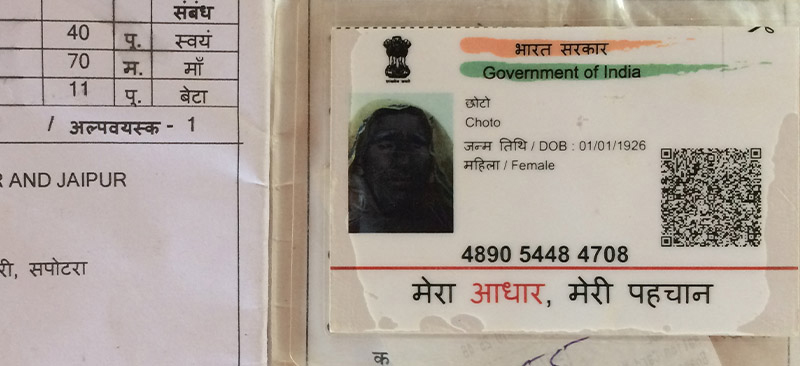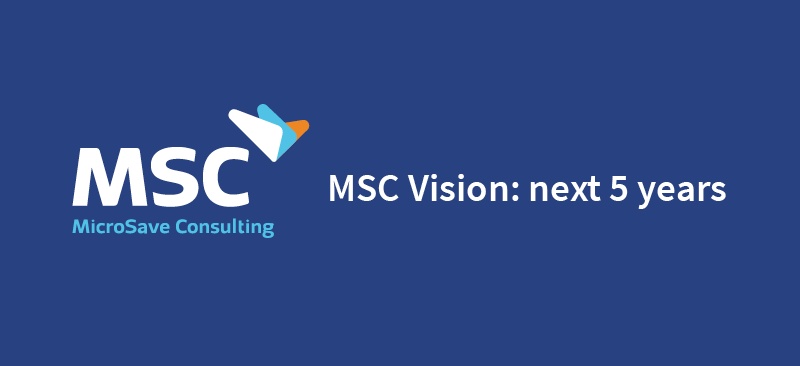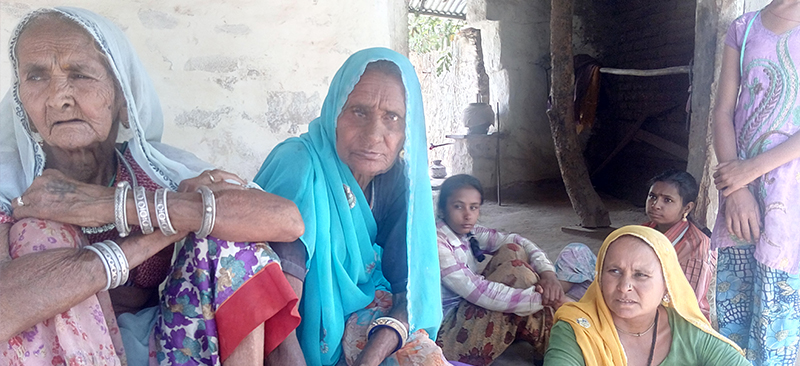The video is the Keynote Speech delivered by Graham A.N. Wright, Director, MicroSave at European Microfinance Week in Luxembourg held on November 15th, 2018.
The Mor committee has delivered its report – What will the report deliver? (Part-I)
The Mor Committee on “Comprehensive Financial Services for Small Businesses and Low-Income Households” submitted its report in record time. The elaborate report is comprehensive – it has the large aspirational ideas and replete with technical and micro details. The report will no doubt generate a lot of debate and also hopefully lay the foundation for the future financial institution architecture to deal with the inclusion of those that are currently outside the formal financial system.
The Committee’s six vision statements are apt and address the current problems in financial inclusion. The four design principles – Systemic Stability, Balance Sheet Transparency, Institutional Neutrality, and Responsibility Towards the Customer – are well thought out and will provide a sound basis to test any new policy or strategy or change from existing policy/strategy.
Several positive suggestions have emerged. These include:
- Licensing of new categories of banks with lower entry requirements, making priority sector lending (PSL) portfolios tradable through a variety of instruments;
- Allowing non-bank financial companies (NBFCs) to be business correspondents (BCs);
- Pricing freedom for banks on farm loans;
- Reorienting the focus of the National Bank for Agriculture And Rural Development (NABARD), Small Industries Development Bank of India (SIDBI), National Housing Bank (NHB), etc., towards facilitation of other financial sector institutions;
- Universal reporting of loans to credit bureaus; and
- Setting up a registry of financial institutions that the public can access to verify the antecedents are all positive suggestions.
In addition, the strong links with Aadhaar’s unique identification number, improving the interface of white label ATMs with banks, withdrawal of tax on securitization transactions, freedom to banks and BCs to agree on risk sharing, introducing a small loan guarantee facility with NABARD for farm loans etc., address current problems in a way that will alter the business practices and improve efficiencies all around. The suggestion to address data needs through quarterly reporting and periodic surveys on access to finance are also very appropriate.
However, there are also a number of issues that arise. The short time limit given for realizing the vision statements could present a problem. The idea that these are achievable in less than two years seems more idealistic than realistic. Secondly, by repetitively referring to “low cost”, “reasonable pricing”, “affordable pricing” etc., the Committee has moved away from its design principle of institutional neutrality. At the retail level, small, niche institutions with higher base cost only can deal with small ticket products. By requiring reasonable costs, this type of institutions is excluded even before they start.
On certain larger issues, the committee could have dived deeper. The suggestion to increase priority sector lending from 40% to 50% of adjusted net bank credit (ANBC) will not have been an easy recommendation to make. But the relevance of PSL and specifically the continuation of the 18% requirement for agriculture – which makes a contribution of about 12% to gross domestic product (GDP) – should be questioned.
The discourse on the credit to GDP ratio is interesting. While a higher credit to GDP ratio might be in the best interests of growth in the medium term, a very high rate has negative implications. Very high credit to GDP ratio contains the seed of asset bubbles, as credit availability boosts asset prices all around. Secondly, adequate domestic financial savings levels should be established before large-scale credit expansion can take place. Econometric modeling of required savings rate might well show that a huge effort will be required in the Indian context to achieve higher domestic household savings rates required to drive high credit to GDP ratio.
The continuation of NPA based portfolio assessment is an anachronism in the current context. All financial institutions should use portfolio at risk as the first choice tool for measuring risk in their loan assets. If MFIs can successfully use the same, banks should be able to adopt the same.
Comments on the current regulatory stance – that regulatory bandwidth will determine the financial architecture – are conspicuous by their absence. While useful suggestions were made on how to use other proxies for supervision, a forthright statement that for a country of India’s size, a large supervision machinery may not be inappropriate (and indeed may be essential) would have a gone a long way in goading the Reserve Bank of India (RBI) to re-examine its regulation function. Currently, we require the regulator not only regulate but also to develop the financial sector and make it the prime mover of the economy – including for low income and vulnerable people.
The challenges in regulation are yet to come. Going by the Committee’s report, a number of new institutional types have to be licensed, their market conduct supervised, customer protection mechanisms expanded and sharpened to provide comfort to the new clients, systemic issues to be addressed and a much larger number of financial institutions have to be brought under supervision for periodic assessment of solvency, sustainability, and probity. The preparatory work of designing the entry requirements, eligibility criteria for promoters of new institutions, developing a regulatory and supervisory framework, hiring and capacity building of staff to handle the expanded number of institutions and putting in place a sound off-site surveillance mechanism are tasks that will demand considerable energy and time. Once the preparatory work is complete, the ongoing monitoring and surveillance will be rigorous and take up a considerable amount of the central bank’s time in the initial years. A significant part of the challenge will be the change in mindset required of the regulator with regards to the new institutional types and their relevance for financial inclusion. We cannot avoid facing the challenges before they arise by limiting the institutional architecture.
India’s current efforts at financial inclusion perpetuate poor quality service to low-income people; they should expand choices. The Mor Committee has created a basis for expanding choices – the regulator should actively pursue this line of thinking, to enable other existing institutions and possibly new ones, to offer services to the people excluded by the current formal financial service infrastructure.
The Aadhaar way
Opposition to cash substitution for public services has delved, to an extent, on the not-so-widely tried Aadhaar enabled system for identification.
However, work done by MicroSave, examining the implementation of the Aadhaar enabled schemes using the Unique Identification of India (UIDAI) platform shows there is much evidence to suggest that the system could, indeed, work.
MicroSave’s fieldwork highlights the significant changes brought out by the Aadhaar enabled systems and the progress achieved in two districts, Aurangabad city in Maharashtra and East Godavari district in Andhra Pradesh.
This article is part of three in a series to showcase the work done by MicroSave with respect to the efficacy of Aadhaar.
Pension process in Aurangabad – A chronicle
In Aurangabad, pensioners comprise a substantial proportion of the population on welfare schemes provided by the central and state Government. However, ghost beneficiaries, using false identities, were common in these pension schemes. Aadhaar enabled distribution of payments was introduced in five government schemes viz. Sanjay Gandhi Niradhar Yojana, Shravan BAL Old Age pension scheme, Indira Gandhi Old Age pension scheme, Indira Gandhi National Widow pension scheme and Indira Gandhi National Disable pension scheme. The local administration wanted to eradicate these ghost beneficiaries, eliminate the middlemen and thus improve the disbursement process.
The process of thinking on improving the disbursement process coincided with UIDAI’s Aadhaar programme gaining momentum. In Aadhaar, the district administration saw an opportunity to improve the disbursement of pension payments.
In 2011, the district administration initiated Project Dilasa to disburse payments to beneficiaries of five selected social assistance programmes. The Department of Social Justice Assistance, Government of Maharashtra, signed an agreement with the Bank of India for the bank to manage the cash and deliver payments through the Aadhaar-enabled payment system. Customer service points – agent outlets to help beneficiaries receive payments upon providing the authentication/biometric details were identified, thus helping leverage the Aadhaar identity to ensure targeted delivery.
The results? By eliminating ghost beneficiaries alone, Project Dilasa helped the district administration save Rs. 7.7 crore.
So what made project Dilasa click? For one, concerted and collective action coupled with process re-engineering and the effective use of technology made it possible for the District Collector to motivate his team members and closely monitor their progress. The district administration adopted several innovative measures for implementation of AePS (Aadhaar Enabled Pension Scheme) including digitization of the scheme database; development of a web-based application with the involvement of the National Informatics Centre; and detailing the standard operating procedure and process guide for it to be replicated elsewhere in the country.
Using the Aadhaar identity of beneficiaries ensured in effective targeting, increased transparency, and enhanced accountability while delivering payments. Savithri (whose name has been changed to protect her identity), a beneficiary of the Sanjay Gandhi Niradhar Anudhan Yojana (a scheme for destitutes – widows, disabled, divorcees under which Rs.600/person is rendered provided they are less than 65 years old, with a state domicile of more than 15 years and an annual income of uptoRs. 21000) told the MicroSave team that with AePS, the process is no longer time-consuming, bureaucratic and tedious as it was earlier.
Before the implementation of AePS, Savithri had received funds in her postal savings account that had a complex multi-step process and that also involved middlemen. She had to provide documents to establish her identity, certify the death of her husband and prove her age, address and domicile each time she had to access her welfare payments. However, in the current system, she substitutes one Aadhaar card for these documents and gets the full amount without tipping any government functionaries.
Leveraging Aadhaar has helped the district administration of Aurangabad to distribute payments to genuine beneficiaries. The success of the project, however, is also due to the presence of a few unique factors. Aurangabad is urban, with a motivated administration, an excellent banking partner and a diligent business correspondent that tools the process. These advantages accelerated effective implementation, establishing beyond doubt that cash transfers to the beneficiaries can be seamlessly rendered provided these enabling factors are in place.
Aurangabad, as a pilot, presents a great case that stands testimony to this and also demonstrates that it can be replicated elsewhere in the country. Facilitating the enabling factors as well as the creation of a conducive environment for various actors to function is central for the effective implementation of AePS.
In the next part on “the Aadhaar way”, Aadhaar implementation in the much acclaimed Public Distribution System in East Godavari district is examined.
(A print of this article was published with OneWorld South Asia)
MSC vision video: the next 5 years
At MSC, the future looks exciting. We continue our current engagements in identity-based financial inclusion and bulk payments (G2P), while our work in the next five years promises to forge a deep connect between financial services and the real economy. We will address the digital divide, incorporating particularly vulnerable groups under the umbrella of financial inclusion, and continue to build capacity and skills.
We continue to make use of our experience and insights to deliver value to help our clients achieve sustainable performance improvements and unlock enduring value in the digital age. We have the capacity to engage and lend support, the flexibility to respond to client needs on the go, and deliver beyond expectations—because we operate primarily with our own staff, augmented with specialist associate consultants.
A deep understanding of our markets in Asia and Africa gives us the edge. Our innovative market-led approach continues to work towards a world in which all people have access to high quality, affordable, market-led financial, economic, and social services in the digital age.
MSC in numbers: our impact in 20 years
For the past two decades, MSC has developed over 250 financial products in more than 56 countries across Asia and Africa, serving 50 million-plus people. We have assisted in the development of digital G2P services, used by more than 700 million people around the world.
MSC has collaborated with over 300 banks, mobile network operators, and microfinance institutions, and trained upwards of 7,700 practitioners, policymakers, and regulators. We have supported over 70 agent network managers, advised over 35 government ministries and regulators, and created over 750 publications.
MSC has a rich experience of working with partners across the globe including banks, mobile network operators, government, donors, and other organizations. Our 45 toolkits on different elements helped us build effective financial-services for low-income clientele. We have deployed our deep insight and experience to implement social performance management systems for 23 clients. MSC currently has a team of 180+ professionals spread across the globe.
The Andhra crisis: The beginning of an end or the end of a beginning?
This presentation discusses the causes of Andhra Pradesh crisis, how it all started and the possible after-effects. It also examines how the Indian MFIs and the government should respond post this crisis. The presentation concludes with reactions from the clients.





